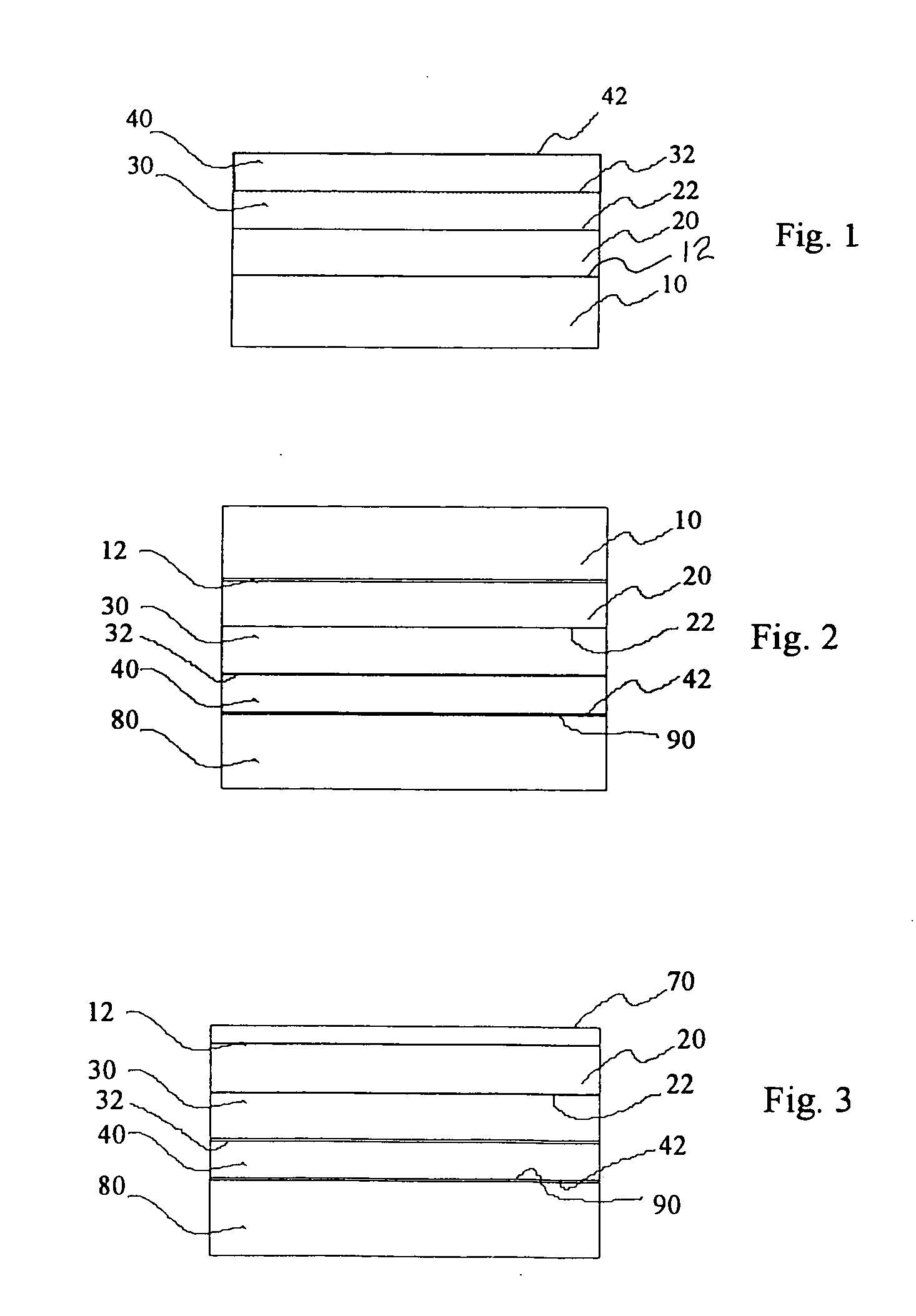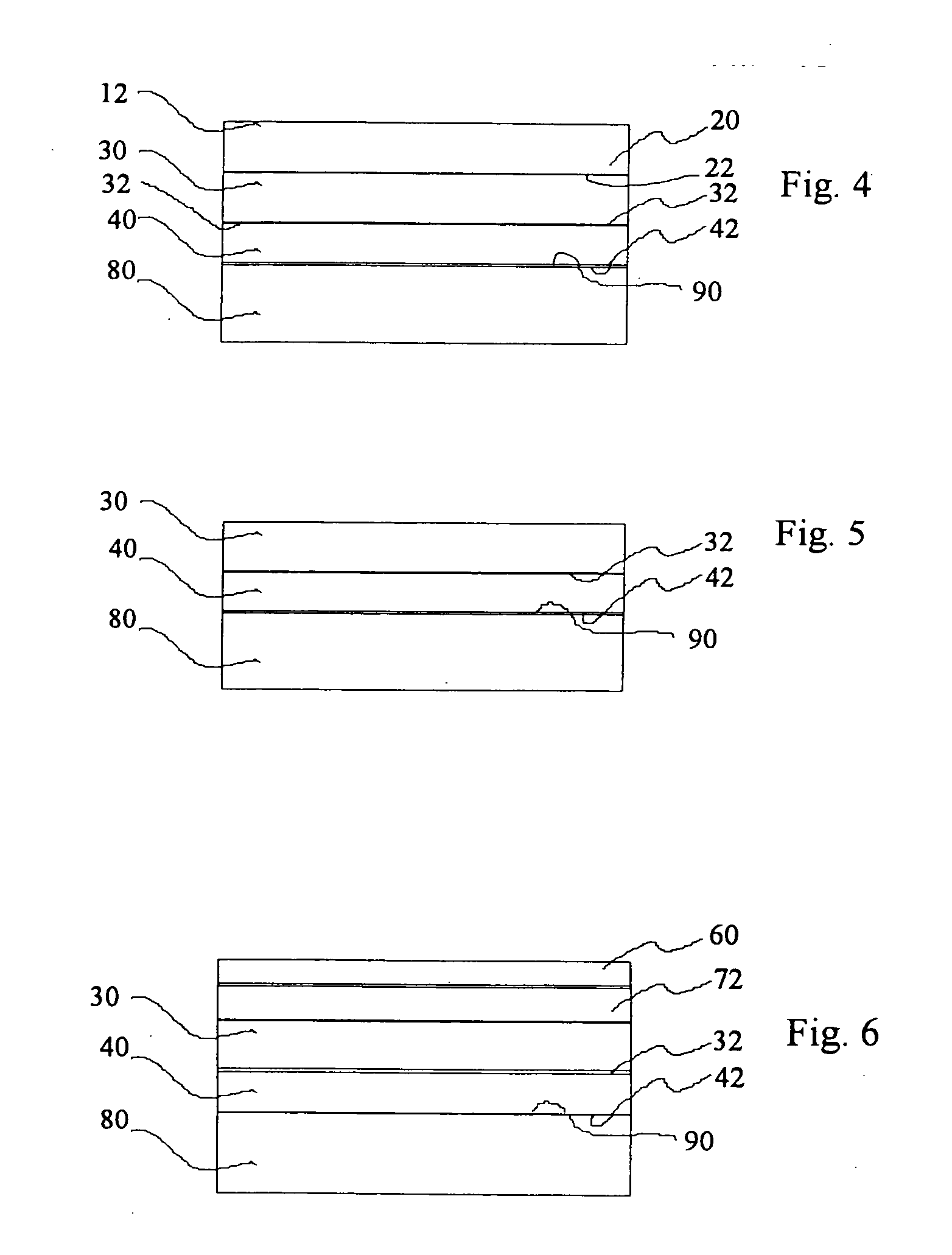Layer transfer of low defect SiGe using an etch-back process
a layer transfer and etching technology, applied in the direction of crystal growth process, chemistry apparatus and processes, transistors, etc., can solve the problems of limiting the full implementation of high-speed devices, increasing the cost of high-speed devices, and several limits of methods, so as to and reduce the cost of high-speed devices.
- Summary
- Abstract
- Description
- Claims
- Application Information
AI Technical Summary
Benefits of technology
Problems solved by technology
Method used
Image
Examples
Embodiment Construction
[0016] The embodiment which will now be described in conjunction with the above drawings relates to the formation of a layer of monocrystalline strained Si / SiGe on an insulator material (SGOI) or a SiGe layer on Si with the aid of planarization of surfaces, wafer bonding and a selective wet etching process using SiGe as the etch-stop layer.
[0017] Referring now to FIG. 1, a cross section view of a partial embodiment of the invention is shown comprising a substrate 10 and a plurality of layers 20, 30 and 40. Substrate 10 may be a single crystal material such as Si, SiGe, SiGeC, SiC etc. suitable for forming epitaxial layers thereon. An epitaxial graded layer 20 of Si1−xGex is formed on the upper surface 12 of substrate 10. The upper surface 22 of graded layer 20 is substantially relaxed or completely relaxed. The relaxation may be due to a modified Frank-Read mechanism described by LeGoues et al. in U.S. Pat. No. 5,659,187 which issued on Aug. 19, 1997 and is incorporated herein by r...
PUM
| Property | Measurement | Unit |
|---|---|---|
| surface roughness | aaaaa | aaaaa |
| thickness | aaaaa | aaaaa |
| temperature | aaaaa | aaaaa |
Abstract
Description
Claims
Application Information
 Login to view more
Login to view more - R&D Engineer
- R&D Manager
- IP Professional
- Industry Leading Data Capabilities
- Powerful AI technology
- Patent DNA Extraction
Browse by: Latest US Patents, China's latest patents, Technical Efficacy Thesaurus, Application Domain, Technology Topic.
© 2024 PatSnap. All rights reserved.Legal|Privacy policy|Modern Slavery Act Transparency Statement|Sitemap



